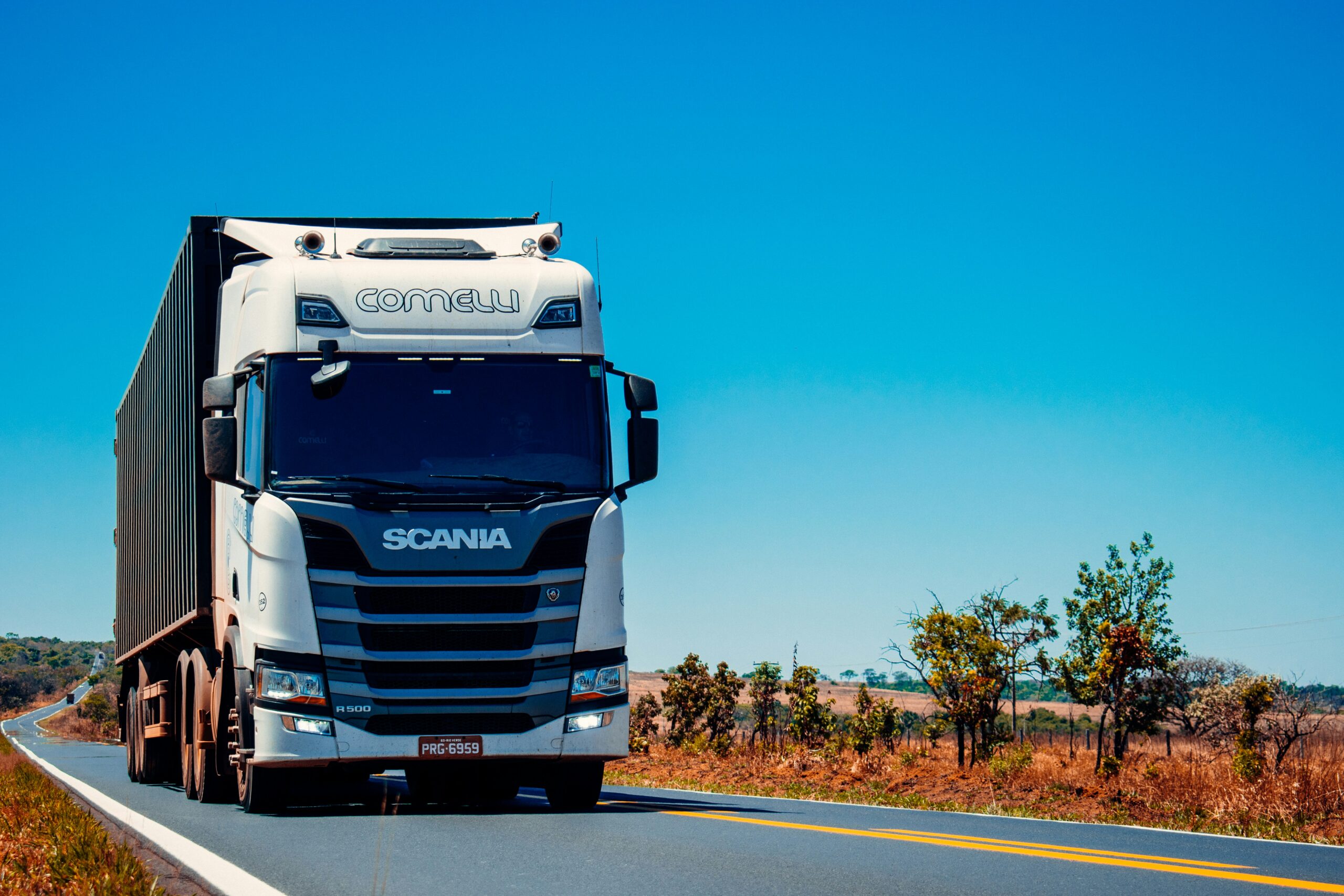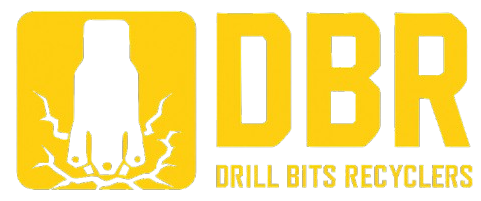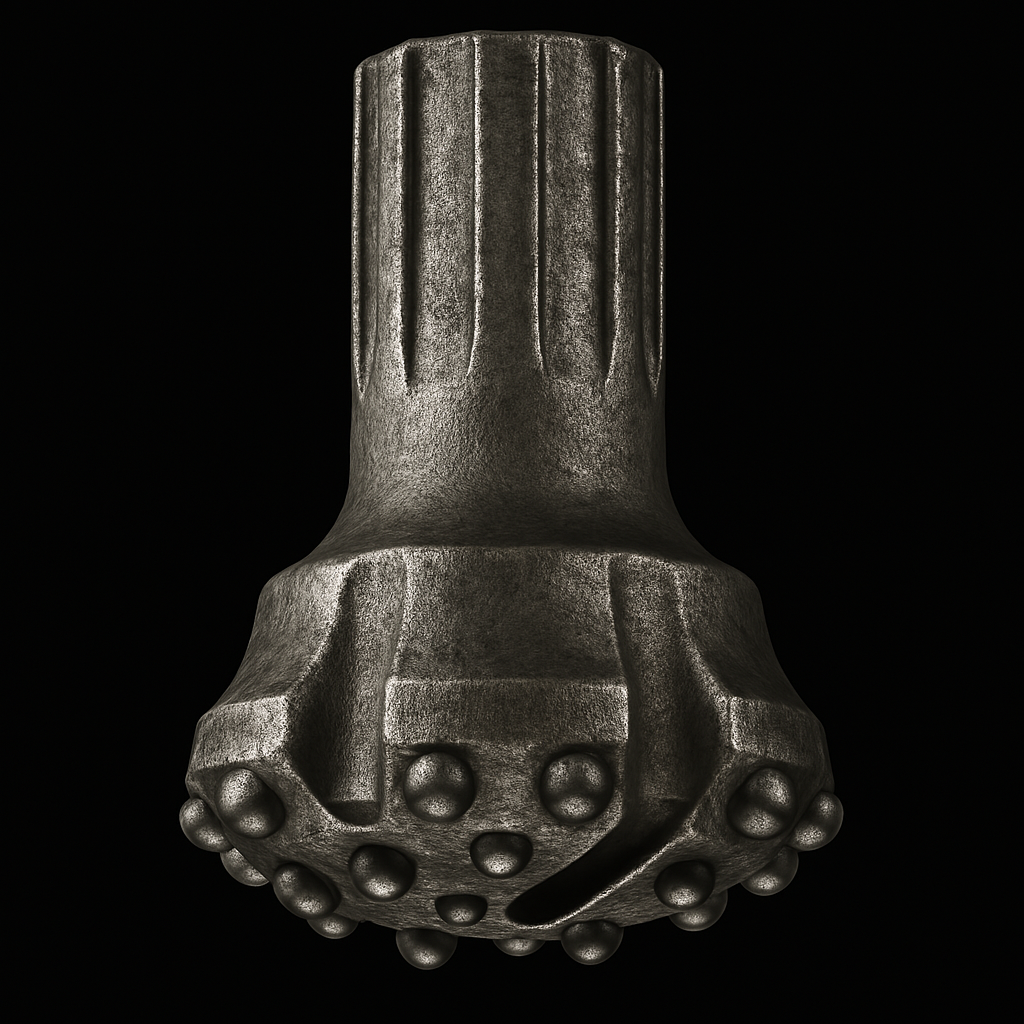The Offshore Recycling Puzzle: How Remote Platforms Turn Waste Into Working Capital
Logistics challenges and surprising solutions from the North West Shelf
The Offshore Recycling Puzzle
Offshore drilling rigs are some of the most remote and logistically complex operations on the planet. From the North West Shelf to the Timor Sea, these platforms are engineered to extract value from the seabed, but few operators realise just how much hidden value is left behind on deck.
Worn drill bits, broken tungsten inserts, and decommissioned tooling often sit idle in shipping containers, waiting for a supply run or weather window. Over time, this scrap builds up, and so does its potential value. In today’s cost-conscious, ESG-driven operating environment, that’s no longer something to ignore.
As scrap recovery becomes a strategic focus across Australia’s offshore sector, companies are learning how to turn metal waste into working capital, without adding complexity to already overloaded logistics chains.
In this blog, we explore how offshore platforms are:
- Tackling the challenges of remote recycling logistics
- Unlocking the high scrap value in tungsten drill bits
- Meeting compliance and ESG goals through smart waste strategies
Because even 200km from shore, recycling makes business sense, if you know how to do it right.
Why Offshore Drilling Waste Holds Hidden Value
The economics of drill bits recycling and tungsten recovery
Offshore drilling isn’t just expensive, it’s resource-intensive. Each bit run through seabed formations is built with high-strength materials like tungsten carbide, which wears down over time but doesn’t lose its underlying value. What many operators overlook is that used drill bits, inserts, and hard-facing components can deliver substantial scrap returns, especially when processed by tungsten recovery specialists.
With tungsten prices remaining strong on global markets, even a small stockpile of offshore drill bits could represent tens of thousands of dollars in unrealised value, a rare opportunity to offset tooling costs in an industry where margins are constantly under pressure.
How offshore platforms accumulate high-value metal waste
Because offshore sites prioritise safety and uptime, used tooling and failed components are often stored for long periods. Over a few months, platforms accumulate:
- Worn-out DTH and PDC drill bits
- Broken tungsten inserts and nozzles
- Steel and nickel alloy rig parts damaged during operations
- Consumables from high-pressure or corrosive environments
Without regular backloading or a recycling strategy in place, these materials can pile up in bins, deck cages, or containers, sitting idle instead of being recovered for cash or credit.
Why scrap recovery is becoming a priority for operators
Offshore operators are now under pressure from two sides: rising costs and tighter environmental oversight. As a result, scrap metal recovery is shifting from an afterthought to a priority. Why?
- It supports ESG reporting by diverting waste from landfill
- It frees up limited storage space on already crowded platforms
- It contributes to circular economy goals, increasingly important to stakeholders
- It creates a new revenue stream from materials already on hand
The bottom line: scrap recovery doesn’t just improve sustainability, it makes economic sense. And for rigs operating far from port, every opportunity to improve efficiency counts.
Unique Recycling Challenges on Remote Platforms
Weather windows and the impact on waste transport
Offshore recycling isn’t just about what you collect, it’s about when and how you move it. Platforms operating off the North West Shelf are at the mercy of unpredictable weather systems, seasonal swells, and cyclonic activity. These conditions narrow down available “weather windows” for backloading scrap to supply vessels or helicopters.
The result? Scrap metal can sit untouched for weeks or even months, waiting for safe conditions. This delays recycling, clutters decks, and complicates planning, especially when bins reach capacity.
To manage this, operators need:
- Pre-approved waste manifests ready to deploy during windows
- Flexible pickup schedules coordinated with logistics teams
- Modular storage solutions that don’t interfere with daily rig operations
Crew changes and limited cargo space
Offshore platforms run tight schedules, especially during crew changeovers. With only limited cargo capacity on flights and vessels, scrap metal is often bumped in favour of personnel, food, or critical equipment.
This creates a logistical bottleneck. Even high-value materials like tungsten drill bits can be deprioritised unless recycling is built into the logistics planning process.
Solutions include:
- Integrating scrap manifests into changeover schedules
- Allocating space on routine supply runs, not just shutdowns
- Storing and tagging scrap for priority backload once space is available
By treating recycling like any other critical asset, operators can ensure it gets off the rig and back into the supply chain, where it belongs.
Regulatory and environmental compliance hurdles
Australia’s offshore industry is governed by strict environmental regulations under NOPSEMA and the Offshore Petroleum and Greenhouse Gas Storage Act. This means scrap handling must comply with waste management plans, spill prevention protocols, and materials tracking.
Improper storage or disposal of scrap materials offshore can lead to:
- Non-compliance fines
- Safety risks from unsecured metal on deck
- Environmental damage in the event of accidental discharge
Recycling solves two problems at once: it clears the waste safely and documents the disposal process, supporting both environmental and corporate governance obligations.
The Role of Tungsten in Offshore Recycling
Why tungsten drill bits hold the highest scrap value
In offshore drilling, few consumables carry as much hidden value as tungsten drill bits. Used in both exploration and production, these bits are engineered with tungsten carbide, a material prized for its hardness, density, and resistance to wear. But when the bit wears out, the tungsten doesn’t lose its value.
Offshore operators often store these spent tools in bins or cages, unaware that even a small volume of used bits can fetch premium prices from specialist tungsten recyclers. Why?
- Tungsten scrap prices typically outpace common metals like steel or iron
- Carbide content remains valuable even when bonded or fractured
- Dense composition means strong return per square metre of storage space, ideal for tight rig conditions
Recycling tungsten drill bits isn’t just smart, it’s strategic, especially when space and weight are at a premium.
Sorting and testing drill bits offshore
Accurate sorting is critical for getting top-dollar returns, but doing it offshore comes with limitations. Without the full capabilities of a recycling yard, crews need to work with practical systems for identifying tungsten-bearing tools.
Offshore best practices include:
- Tagging drill bits by type and usage history
- Separating bonded bits from steel-only components
- Using mobile XRF scanners (where available) to verify carbide content
- Capturing images and weights to pre-quote values before transport
For larger operations, working with recyclers like DBR can enable pre-sorting training or supply of storage bins marked by material type, saving time and ensuring better pricing when the load reaches shore.
Case examples of tungsten recovery from rig equipment
Real offshore rigs have already proven the model works. For example:
- A semi-submersible platform off Exmouth recovered over $25,000 worth of tungsten inserts during a maintenance demob, simply by sorting and backloading drill bit scrap previously left idle.
- A North West Shelf operator integrated tungsten recycling into its scheduled changeover cycle, returning multiple cages of DTH bits for testing and payout, without affecting crew logistics.
- An FPSO contractor partnered with a mainland recycler to pre-assess tungsten scrap value via photos, improving decision-making and justifying the freight cost.
In every case, advance planning and tungsten awareness unlocked serious value, from materials already sitting on deck.
Logistics Solutions for Offshore Recycling
Coordinating recycling schedules with crew change flights and vessels
Offshore logistics are already tightly choreographed, from crew rotations to supply drops. Adding recycling into the mix might seem like an extra headache, but with the right planning, it becomes just another part of the cycle.
The most efficient offshore operators:
- Align scrap backloading with scheduled crew change flights or supply vessels
- Pre-tag and log materials for quick mobilisation when cargo space becomes available
- Share waste manifests ahead of time with recycling partners to avoid delays
By planning ahead, recycling fits neatly into the existing transport schedule, no costly extra trips, no last-minute scrambling.
Using modular waste collection units for storage
Space is at a premium offshore, but that doesn’t mean scrap needs to be a hazard or an eyesore. Modular storage units, such as stackable bins or weatherproof deck cages, are ideal for safely storing scrap until the next transport window.
Best practice storage includes:
- Lockable, labelled bins to separate tungsten, steel, and general scrap
- Compact cages that protect materials from corrosion or damage at sea
- Secured tie-downs to prevent movement in heavy weather
- Visual ID markers to speed up handling during backloading
Recycling-ready storage ensures that when the window opens, your scrap is ready to move fast, and arrive sorted for optimal processing.
Partnerships with mainland recyclers for efficient turnaround
Once scrap hits shore, time is money. Offshore operators need recyclers who understand urgency, provide accurate testing, and process payments fast.
WA-based partners like Drill Bits Recyclers support offshore recycling with:
- Pre-arranged collection at port or heli-base
- XRF analysis to test and grade tungsten and alloy content
- Same-day EFT payment on verified loads
- Custom reporting aligned with your internal ESG and audit frameworks
The key is continuity, from deck to depot. With the right partner, offshore scrap doesn’t just leave the platform; it comes back as working capital and compliance credit.
Case Studies from the North West Shelf
Real-world examples of offshore waste being turned into profit
Offshore platforms operating in the North West Shelf have begun rethinking how they manage drill bit waste, and the results speak for themselves.
- Floating Production Facility, Dampier Sub-Basin:
During a scheduled maintenance demob, the rig’s team backloaded four cages of worn drill bits and tungsten inserts previously earmarked for disposal. After testing and sorting, the load returned over $38,000 in tungsten scrap value, with funds directed back into tooling budgets. - Jack-Up Rig, Carnarvon Basin:
Facing storage limitations, the operator trialled a modular bin system for separating tungsten carbide, stainless steel, and mild steel. The pre-sorted materials were shipped ashore on a routine supply vessel, earning a 15% higher payout due to the clean separation. - Drillship, Exmouth Plateau:
The rig integrated recycling into its crew change manifest. By allocating cargo space for two compact scrap bins every fortnight, they maintained a steady recycling cycle, minimising deck clutter and generating consistent scrap returns with each load.
These examples show that with a bit of planning, offshore rigs can recover significant value, even in the harshest, most remote conditions.
How operators managed drill bit recycling despite extreme weather
A major challenge for offshore platforms is timing, especially during cyclone season. One operator near Barrow Island successfully navigated this by pre-staging scrap bins for immediate uplift during a narrow weather window. Coordination between the rig, the transport contractor, and the recycler allowed the entire load to be cleared in under 24 hours between squalls.
Key takeaways:
- Plan early and have bins ready ahead of expected windows
- Use weather forecasts to adjust manifests in real time
- Partner with recyclers that offer flexible scheduling and rapid response
In volatile conditions, preparation is the difference between value recovered, and value lost.
Lessons learned for logistics planning
From these case studies, a few clear lessons emerge:
- Scrap has value, but only if it’s recoverable.
- On-deck organisation and pre-sorting matter.
- Reliable mainland partners are key to smooth turnaround.
- Recycling can, and should, be built into offshore logistics.
When offshore teams treat drill bit recycling as part of operations, not an afterthought, they gain both financial and environmental wins.

Maximising Offshore Scrap Returns
Preparing drill bits and scrap for transport to reduce costs
Offshore transport is expensive, every kilogram counts. That’s why preparing scrap for backloading is essential if you want to maximise returns without blowing out logistics costs.
Here’s how leading offshore teams reduce transport overheads:
- Consolidate high-value materials first, prioritise tungsten carbide and alloys over low-value steel
- Remove non-metal contaminants like mud, rubber, or grease where practical
- Use labelled, stackable bins to streamline loading and storage
- Weigh and list each bin’s contents for faster processing onshore
By sending sorted, well-prepared loads, operators reduce time spent onshore, avoid contamination penalties, and command better prices per kilo.
How testing (XRF analysis) improves tungsten recovery rates
Not all tungsten drill bits are created equal. To get the most from your scrap, you need to know exactly what’s inside, and that’s where XRF (X-ray fluorescence) testing comes in.
When your recycler conducts XRF analysis:
- Carbide content is measured precisely, down to trace elements
- Mixed loads can be split by quality level for tiered pricing
- Operators receive detailed breakdowns for every shipment
- ESG reporting improves, thanks to verifiable data
Offshore teams that work with recyclers offering XRF testing see higher recovery rates and better trust in pricing, particularly when shipping mixed bins.
Partnering with specialists for better pricing and ESG reporting
Finally, the best way to maximise offshore scrap returns is to choose the right partner, one who understands offshore operations, values tungsten properly, and delivers fast, compliant, transparent service.
At Drill Bits Recyclers, we work with offshore clients across WA to:
- Coordinate marine and air pickups aligned with your schedules
- Deliver same-day scrap valuations upon receipt
- Provide tailored ESG and traceability reports for corporate requirements
- Pay via EFT, fast
When offshore teams and specialist recyclers work together, scrap recovery becomes a smart business function, not just a waste task.
Conclusion: Turning Offshore Waste into Working Capital
Offshore drilling platforms face some of the harshest conditions and tightest logistics constraints in the industry. But even hundreds of kilometres from shore, there’s real value sitting on deck, in the form of used drill bits, worn inserts, and scrap tooling that often goes unnoticed.
From the North West Shelf to the Exmouth Plateau, operators are beginning to recognise that offshore recycling isn’t just possible, it’s profitable. With the right preparation, trusted logistics, and support from a specialist recycling partner, these platforms are turning metal waste into working capital that directly offsets operational costs.
To recap:
- Tungsten drill bits hold serious value, even after wear
- Storage and transport can be solved with modular systems and scheduling
- Testing and sorting boost returns, while meeting ESG and compliance goals
- Partnering with experienced WA-based recyclers like DBR unlocks fast, high-value payouts with full traceability
Your scrap isn’t just waste, it’s a resource. And offshore, every opportunity to improve efficiency counts.
Contact us to learn how we manage drill bit recycling for remote platforms.
Get in touch with Drill Bits Recyclers and discover how our offshore solutions help your platform recover more, with less hassle.

